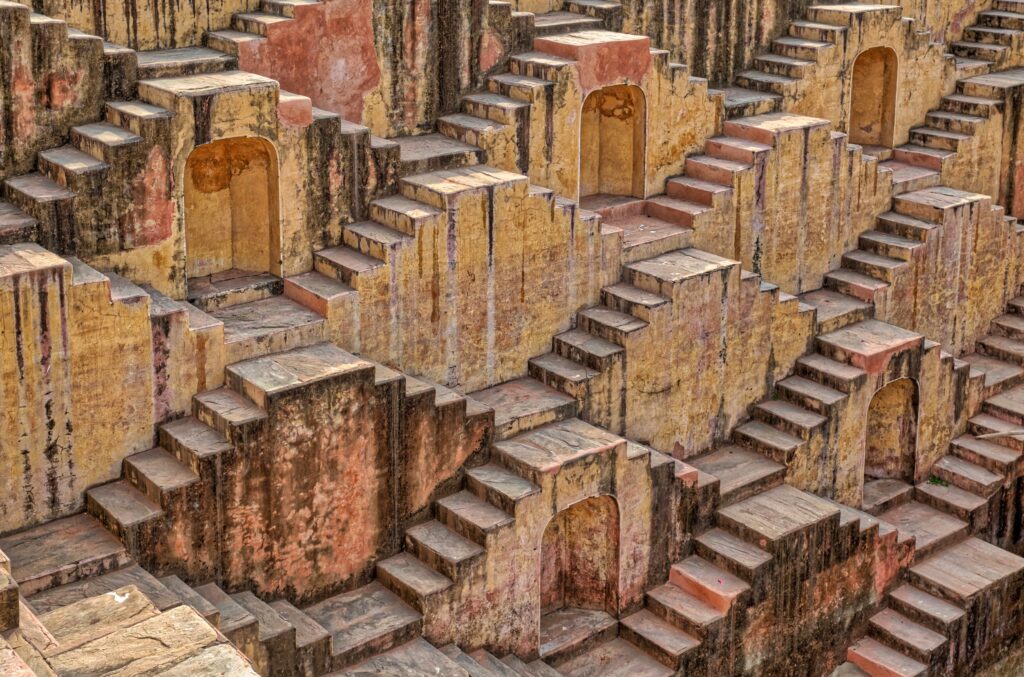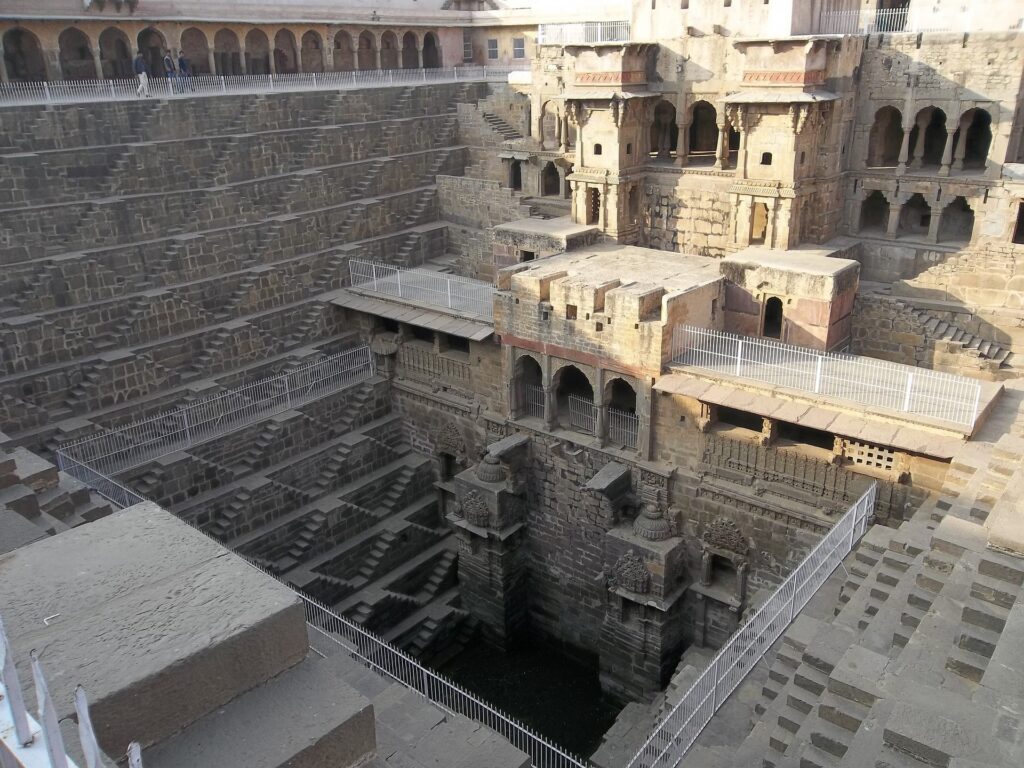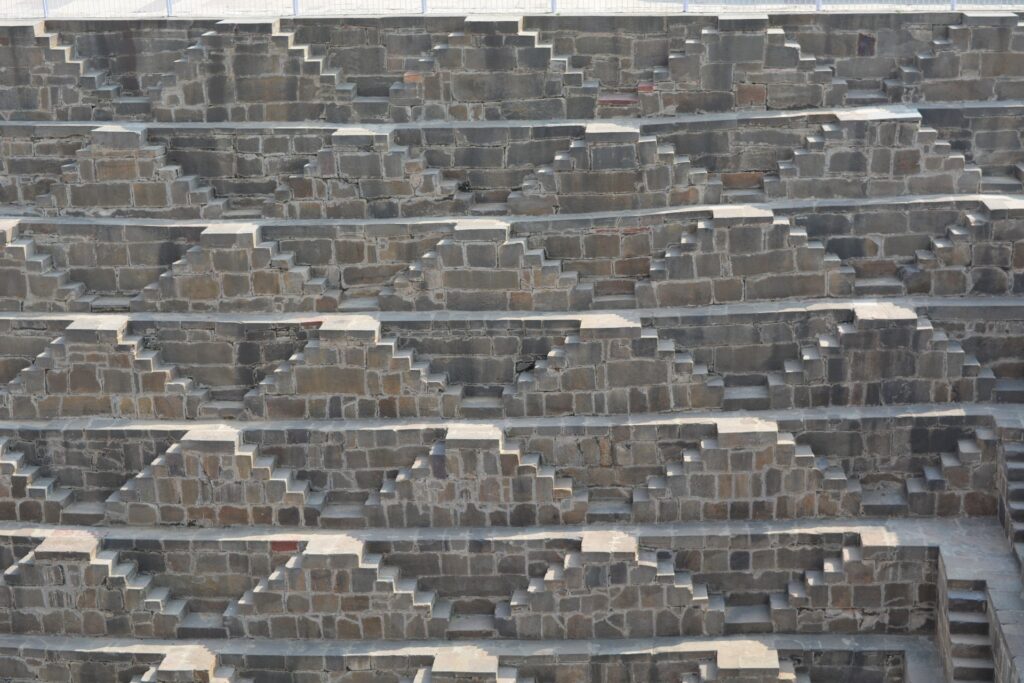An ornately geometric step well enticing those thirsty for water, art and architecture, Chand Baori in Abhaneri has seen a millennium pass by with its beauty intact. A thing of beauty is a joy forever, indeed! An hour’s drive from Sariska Manor – the luxury jungle lodge in Sarika, a visit to Chand Baori is a quintessential part of your pilgrimage for history buffs.
Chand Baori is a stepwell located in the village of Abhaneri, in the Indian state of Rajasthan. It was built in the 9th century and is considered one of the deepest and largest step wells in India. The well is named after King Chanda, who is believed to have commissioned its construction.

King Chand, also known as Chandra, was a ruler who is believed to have commissioned the construction of the Chand Baori stepwell in Abhaneri, Rajasthan. He is considered to be the founder of the Abhaneri village, which was originally named “Abha Nagri” after his queen, Abha.
Not much is known about King Chand’s life, but it is believed that he belonged to the Gurjar Pratihar dynasty, which ruled a large part of Northern India during the 7th to 11th centuries. The construction of Chand Baori is believed to have taken place in the 9th century during his reign.
King Chand’s contribution to the region’s architecture and engineering is significant. Chand Baori is an outstanding example of ancient Indian engineering and architecture, and it still stands tall after more than a thousand years, attracting tourists from all over the world.
The legacy of King Chand continues to live on through the magnificent structures he built, and his name has become synonymous with the Abhaneri village, which is a testament to his vision and foresight.
Aptly named in King Chand’s honour, Chand Baori, the stepwell is a four-sided structure with a depth of 20 meters and 3,500 narrow steps arranged in perfect symmetry. It was designed to collect and store rainwater, which was then used for irrigation and domestic purposes. The well is also adorned with intricate carvings and sculptures of deities, serpents, and other mythological figures, which reflect the exquisite craftsmanship of the artisans of that time.

Chand Baori is not only a magnificent example of ancient engineering and architecture but also a popular tourist attraction. It is visited by thousands of tourists every year who come to marvel at its intricate design and learn about its historical and cultural significance.
Another notable attraction in Abhaneri is the Harshat Mata temple, dedicated to the goddess of happiness and joy. The temple is known for its elaborate carvings and sculptures and is believed to have been built in the 9th century.
Besides these historical and architectural wonders, Abhaneri is also famous for its handicrafts and traditional Rajasthani cuisine. The village is home to skilled artisans who produce exquisite handicrafts such as pottery, metalwork, and textiles. Visitors can also savour the delicious local delicacies such as dal-bati-churma, gatte ki sabzi, and laal maas.

Talk to us to create an itinerary for you based on your interests, starting from visits to centres of spiritual and religious significance to the unparalleled history of Alwar and its grand edifices crystallizing this. Of course, an immersive nature and jungle safari experience is a given when you plan your vacation with Sariska Manor, the luxury resort in Sariska, right at the southern entrance great to the vast expanse of Sariska Tiger Reserve.




